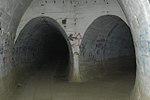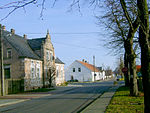Kęszyca Leśna
Międzyrzecz County geography stubsPages with non-numeric formatnum argumentsVillages in Międzyrzecz County

Kęszyca Leśna [kɛ̃ˈʂɨt͡sa ˈlɛɕna] is a village in the administrative district of Gmina Międzyrzecz, within Międzyrzecz County, Lubusz Voivodeship, in western Poland. It lies approximately 11 kilometres (7 mi) south-west of Międzyrzecz, 5 km (3 mi) west of Nietoperek, just west of Kęszyca, by the Kęszyca Lake. It was a location of the Soviet military garrison, which left in 1993, and since 1994 it is an independent populated place.
Excerpt from the Wikipedia article Kęszyca Leśna (License: CC BY-SA 3.0, Authors, Images).Kęszyca Leśna
gmina Międzyrzecz
Geographical coordinates (GPS) Address External links Nearby Places Show on map
Geographical coordinates (GPS)
| Latitude | Longitude |
|---|---|
| N 52.4 ° | E 15.466666666667 ° |
Address
Kęszyca Leśna
66-305 gmina Międzyrzecz
Lubusz Voivodeship, Poland
Open on Google Maps




